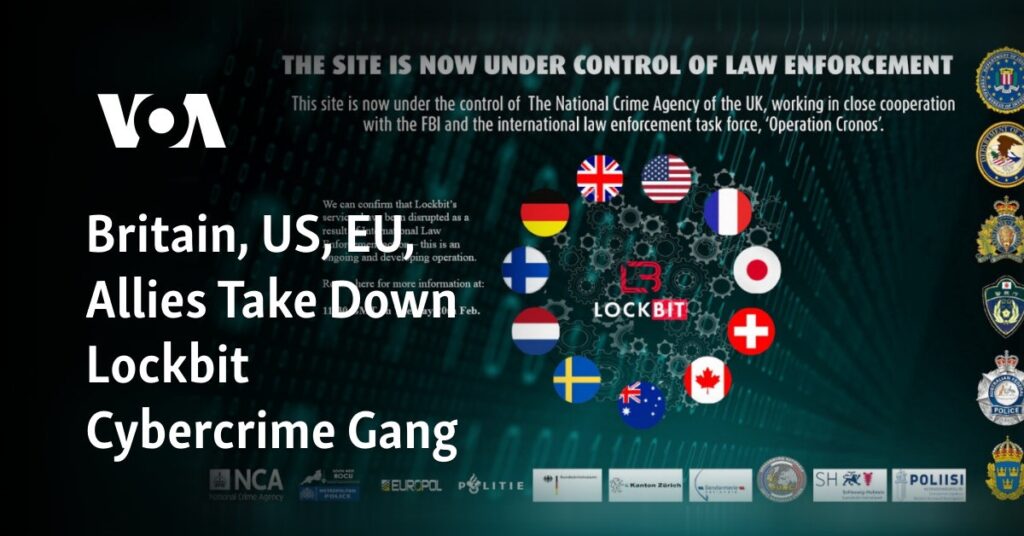Crypto Ransomware Operator LockBit Taken Down in a Global Operation
Introduction to LockBit ransomware
LockBit ransomware is a malicious software program designed to encrypt files on a victim’s computer, rendering them inaccessible until a ransom is paid. It operates by infiltrating computer systems through various means, such as phishing emails or exploiting vulnerabilities in software. Once installed, LockBit encrypts files and demands payment in cryptocurrency, typically Bitcoin, in exchange for the decryption key.

Emergence and spread of LockBit
LockBit first emerged in 2019 and has since gained notoriety for its sophisticated encryption techniques and ability to evade detection by antivirus software. Over the years, it has spread rapidly, targeting businesses and organizations of all sizes across the globe. Its emergence marked a significant shift in the tactics used by cybercriminals to extort money from their victims.
Impact on businesses and organizations
The impact of LockBit on businesses and organizations has been devastating. Companies in various industries, including healthcare, finance, and government, have fallen victim to LockBit attacks, resulting in significant financial losses and reputational damage. The encrypted files often contain sensitive information, making the situation even more dire for affected organizations.
Law enforcement efforts against LockBit
In response to the growing threat posed by LockBit, law enforcement agencies around the world have ramped up their efforts to combat the ransomware group. This has included coordinated international operations aimed at disrupting its infrastructure and apprehending key members of the group. Despite these efforts, LockBit has continued to evolve and adapt, making it challenging to eradicate completely.
Global operation targeting LockBit
In a landmark development, a global operation was recently launched targeting the LockBit ransomware group. Led by law enforcement agencies from multiple countries, the operation aimed to dismantle the group’s infrastructure and bring its members to justice. The operation involved extensive collaboration and coordination among various stakeholders, including government agencies, cybersecurity firms, and technology companies.
Arrests and dismantling of the LockBit infrastructure
As a result of the global operation, several key figures behind the LockBit ransomware group were apprehended, and their infrastructure was dismantled. This dealt a significant blow to the group’s operations and sent a clear message that law enforcement agencies will not tolerate cybercriminal activities. However, experts warn that the takedown of LockBit is unlikely to spell the end of ransomware threats altogether, as other groups continue to operate with impunity.
Recovery efforts and prevention strategies
For businesses and organizations affected by LockBit attacks, recovery efforts can be challenging and time-consuming. In many cases, victims are forced to either pay the ransom or risk losing their data permanently. To prevent future attacks, organizations should implement robust cybersecurity measures, including regular software updates, employee training, and the use of encryption technologies. Additionally, maintaining offline backups of critical data can help mitigate the impact of ransomware attacks.
Future of ransomware threats
While the takedown of LockBit represents a significant victory in the fight against ransomware, experts warn that the threat is far from over. Other ransomware groups are likely to fill the void left by LockBit, employing similar tactics to extort money from their victims. As such, it is essential for businesses and organizations to remain vigilant and take proactive steps to protect themselves against evolving cybersecurity threats.
Conclusion
In conclusion, the takedown of LockBit in a global operation represents a significant milestone in the ongoing battle against ransomware. However, it is clear that the threat posed by ransomware groups remains ever-present, requiring continued vigilance and cooperation among stakeholders. By implementing robust cybersecurity measures and staying informed about emerging threats, businesses and organizations can better protect themselves against ransomware attacks in the future.
FAQs
- Is LockBit the only ransomware group that has been taken down?
- While LockBit is one of the most notorious ransomware groups to be taken down, it is not the only one. Law enforcement agencies have targeted several other ransomware groups in recent years.
- Can businesses negotiate with ransomware operators like LockBit?
- While some businesses may choose to negotiate with ransomware operators to regain access to their data, experts generally advise against paying the ransom, as it only encourages further criminal activity.
- How can individuals protect themselves from falling victim to ransomware attacks?
- Individuals can protect themselves from ransomware attacks by being cautious of suspicious emails and links, keeping their software up to date, and using reputable antivirus software.
- Will the takedown of LockBit put an end to ransomware threats?
- While the takedown of LockBit is a significant development, it is unlikely to put an end to ransomware threats altogether. Other ransomware groups are likely to continue operating, posing similar risks to businesses and organizations.
- What role do cryptocurrencies play in ransomware attacks like LockBit?
- Cryptocurrencies such as Bitcoin are often used by ransomware operators like LockBit as a means of demanding payment from their victims. The anonymous and decentralized nature of cryptocurrencies makes it difficult for law enforcement agencies to trace and recover funds.




